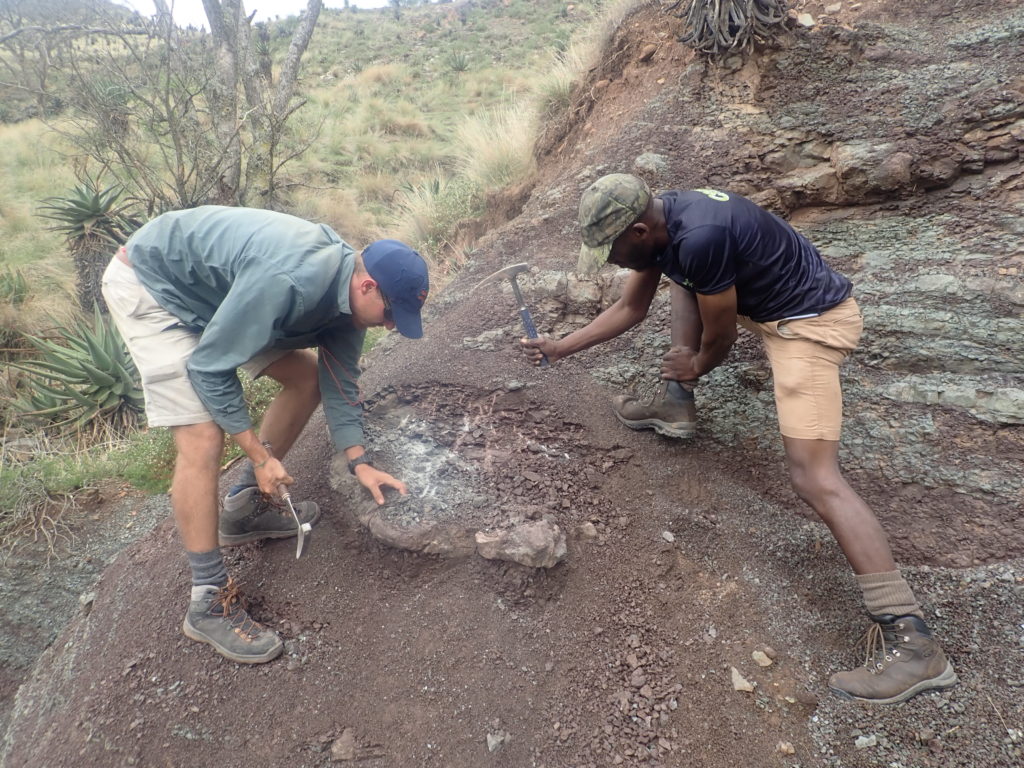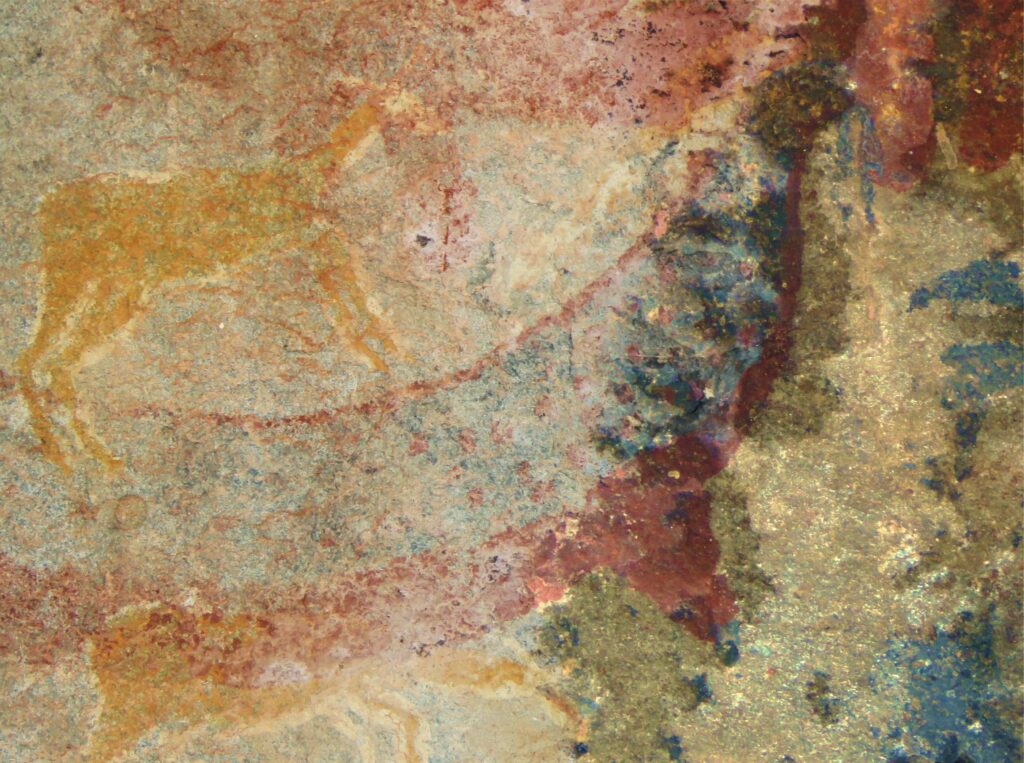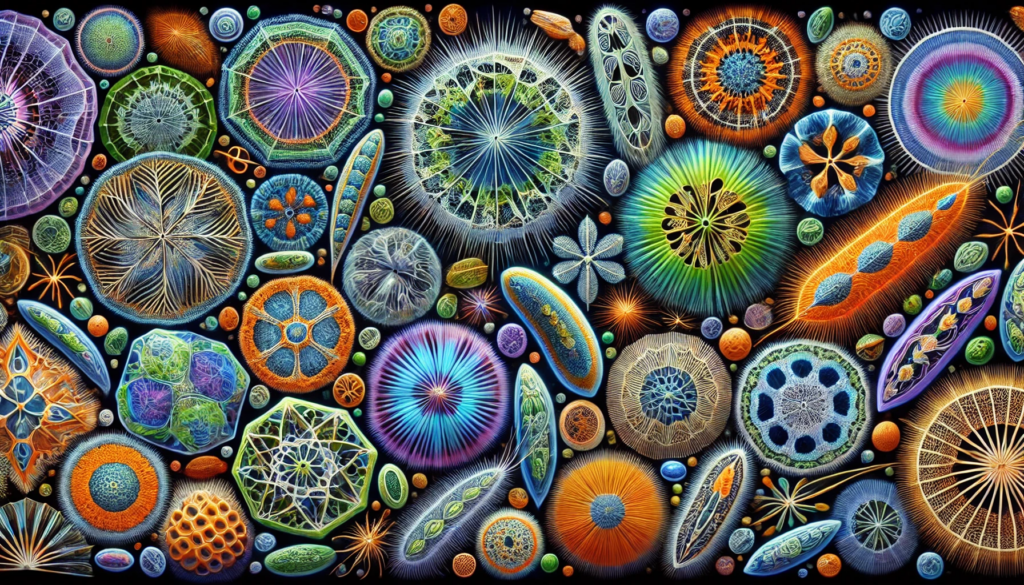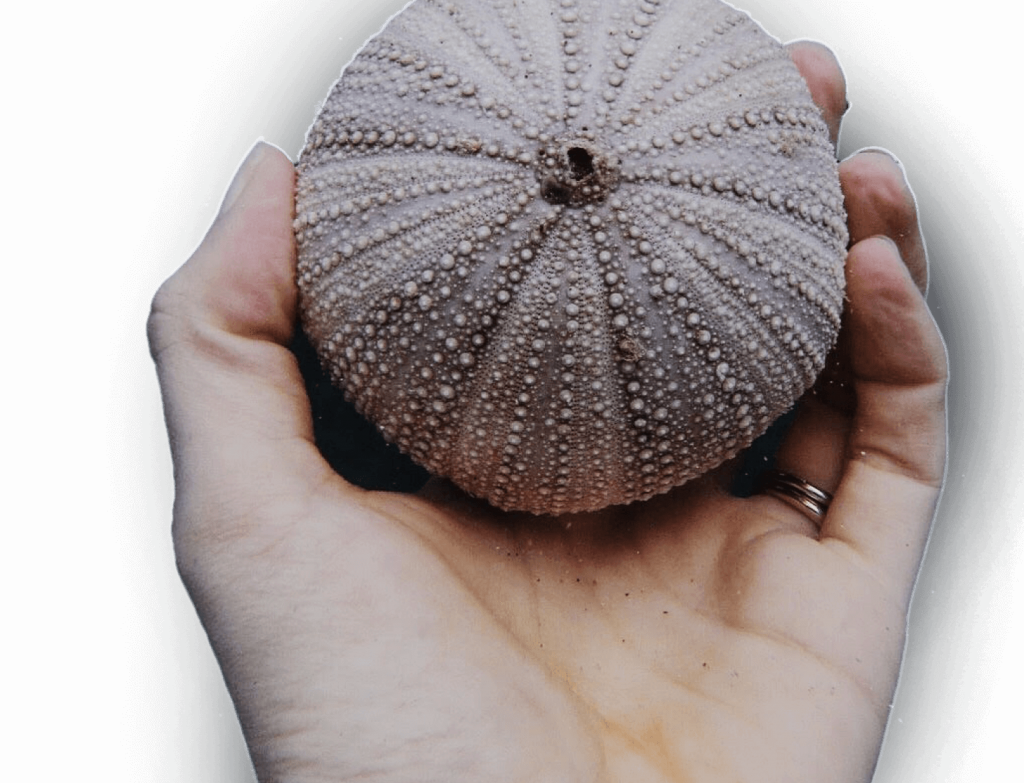Revisiting the Permo-Triassic boundary in KZN
A rich heritage of Karoo fossils has been overlooked in the KwaZulu-Natal in recent years, but there is still a great deal more to discover in the future. A team of Palaeontologists surveyed two districts in KZN and collected many different vertebrate fossil species that are dated from the late Permian to Early Triassic.
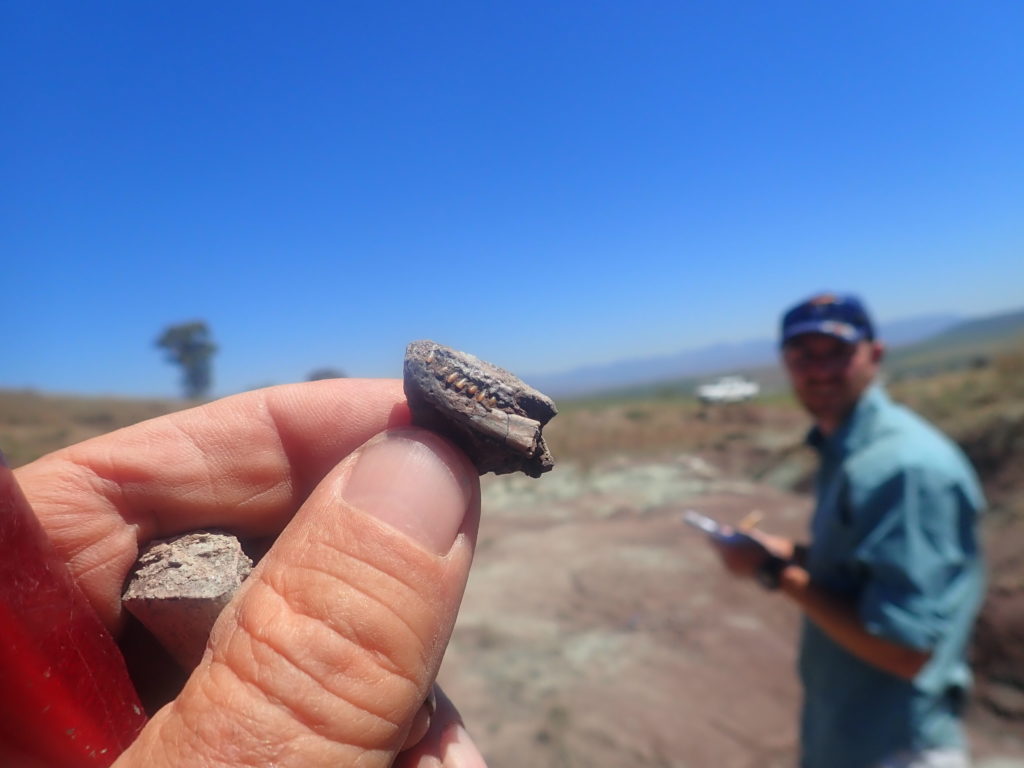
Small bites
- KZN has a rich palaeontological heritage of Karoo fossils that have been overlooked in recent years.
- There remains so much to still discover – even by simply revisiting old localities.
- Significant discoveries often either rely on local knowledge or are made by locals themselves. If you find something interesting please notify a palaeontologist e.g. through photographs on WhatsApp or by email.
Fossil collections at the Evolutionary Studies Institute, Johannesburg, and the Council for Geosciences in Pretoria include around 200 late Permian to Early Triassic vertebrate specimens collected from the Stoffelton and Bergville districts in KwaZulu-Natal Province. However, many of these remain unprepared and are understudied. Furthermore, the limited locality data associated with the specimens means that the stratigraphic context for many of the fossils is unclear and restricts their use for biostratigraphy. What is certain, is that faunas from both the late Permian and Early Triassic are represented and there is the possibility that the Permo-Triassic boundary (PTB) is preserved i.e. a record of the greatest extinction event the Earth has ever seen. Confirming whether the PTB is preserved in this part of the basin, is one of the main objectives of my GENUS Postdoc.
To this end, we undertook fieldwork during September and October 2021 to prospect for and collect late Permian to Early Triassic fossils and measure stratigraphic sections. The trip was a great success and we collected 68 vertebrate fossils representing at least 14 different species. Fossils collected during this fieldwork are currently being prepared by the technicians at the Evolutionary Studies Institute.
Stoffelton
The area around Stoffelton was visited by James Kitching in 1956 and 1958, my dad, Gideon Groenewald, in 1988, and Francois Durand in the early 1990s. What sparked our interest in returning to the area is the rich faunal assemblage that has been recovered from the area. Because many of the historically collected fossils, particularly Kitching’s, have limited locality or stratigraphic data, this fieldwork was aimed to better understand the litho- and biostratigraphy of the area, and the transition between the Daptocephalus and Lystrosaurus declivis assemblage zones (AZ) in particular.
Stoffelton and the surrounding area are tribal land and so the first port of call was the tribal court to obtain permission to work in the area. With the help of a local guide, Tsebo Molefe, we arranged to meet Chief Molefe and the relevant Indunas from the surrounding villages to explain what we were there to do and what we were looking for. Tsebo joined us in the field to learn about the fossils from the area and his help was invaluable to answer questions and explain to curious locals, in isiZulu, what we were doing. The Karoo Palaeontology pamphlet by J. Benoit, I. McKay, and M. Nxumalo also came in handy and several copies were handed out.
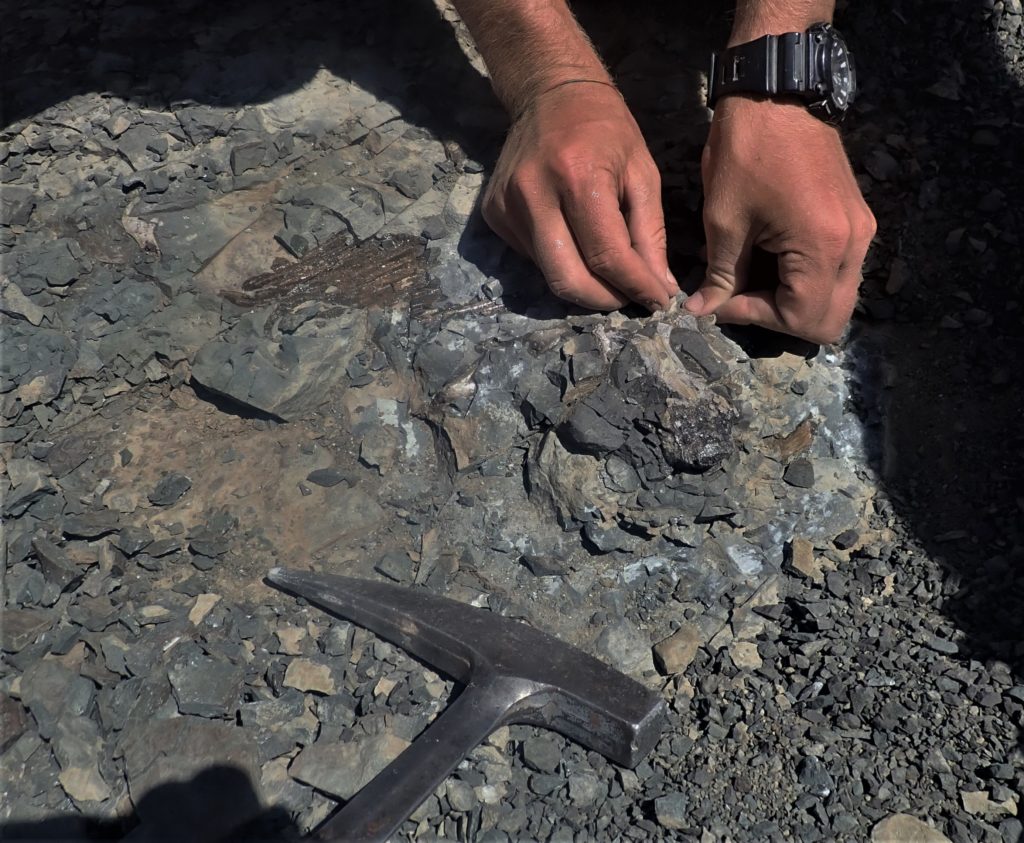
We worked around Stoffelton for two weeks. I was joined for the first week by my dad, Gideon, his wife, Elsabé, and her children, Philip, Iustice, and Jeru Pienaar, and by Prof. Roger Smith for the second and third. Our time in the field was spent tracking down localities visited by previous collectors in addition to looking for new ones. One of the new localities is a hill known locally as Thambokazi Hill. Interestingly, the name means “place of many bones”; possibly referring to the abundant vertebrate fossils (mostly of Lystrosaurus) that are eroding out of the hillside and tumbling down the slope.
Our collecting activities confirmed the presence of both the Daptocephalus AZ, based on the presence of the dicynodonts Dicynodon, Daptocephlaus, and Dicynodontoides, the therocephalian Moschorhinus, and a gorgonopsian canine, and the Lystrosaurus declivis AZ, based on the presence of numerous L. murrayi and L. declivis specimens and the cynodonts Thrinaxodon and Galesaurus.
Bergville
The second area of interest for our fieldwork was around the town of Bergville and Oliviershoek Pass. This region has previously yielded numerous specimens characteristic of the Lystrosaurus declivis AZ, and a few from the underlying Daptocephalus AZ. Again, the fieldwork aimed to better understand the lithostratigraphy of the area and the stratigraphic distribution of vertebrate faunas.
A large proportion of the two weeks we had in this area was spent in and around the very productive quarry at iNdanyana Hill. I was originally made aware of the quarry by Mr Daniel Scott, who sent me photos of an articulated Lystrosaurus skeleton weathering out of the mudstones back in April 2020. Several factors, such as lockdown and finishing my PhD, delayed my visit. I later realised, however, that this very productive locality had previously been visited by the late Prof. James Kitching at least 4 times between 1956 and 1990.
At least 8 vertebrate species have been recovered from the quarry, including the dicynodonts Lystrosaurus murrayi, Lystrosaurus declivis, Lystrosaurus curvatus, the amphibian Lydekkerina huxleyi, the cynodonts Galesaurus planiceps, Thrinaxodon liorhinus, and the therocephalians Scaloposaurus constrictus, and Ericiolacerta parva. All of these are characteristic of the Lystrosaurus declivis AZ. The quarry itself is a palaeontologist’s paradise, exposing a “bonebed horizon” yielding several almost complete, articulated, spreadeagled and prone Lystrosaurus skeletons. At the end of our trip, Roger and I had to force ourselves to stop uncovering them because we simply did not have the time (or space left in the bakkie) to collect them all.
Mudstones from the interval below the quarry proved to be rich in fossilised wood and Glossopteris leaf impressions. The presence of Glossopteris, which went extinct at the end of the Permian, confirms that these rocks are Permian in age. Unfortunately, as most Karoo palaeontologists know, where you find plant fossils you generally don’t find vertebrate fossils. As such, the late Permian faunal record from this part of the basin remains rather scant.
